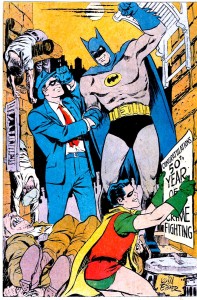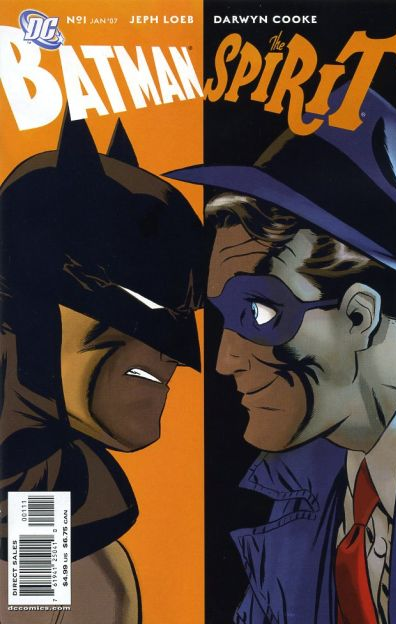Detective Comics #600
In terms of stylish, offbeat crime stories featuring a masked vigilante and a pipe-smoking, irresponsibly lenient police commissioner, it’s hard to beat Batman comics. However, while The Spirit didn’t have such an engaging protagonist, such a fascinating rogues’ gallery, or such an eccentric city as background, it did have Will Eisner. Eisner was one of the greatest comics’ craftsmen of all time, and his work on The Spirit (at least after he came back from WWII) was a tour de force which left a lasting mark on the adventures of the Dark Knight.
Heavily inspired by Citizen Kane and film noir, Eisner’s comics were full of experimental storytelling, shadowy atmosphere, expressionist violence, Dutch angles, pulp poses, and femme fatales. A recognizable trademark was the way in which the first page of each story used to integrate the series’ title, as if it was part of the opening scene:
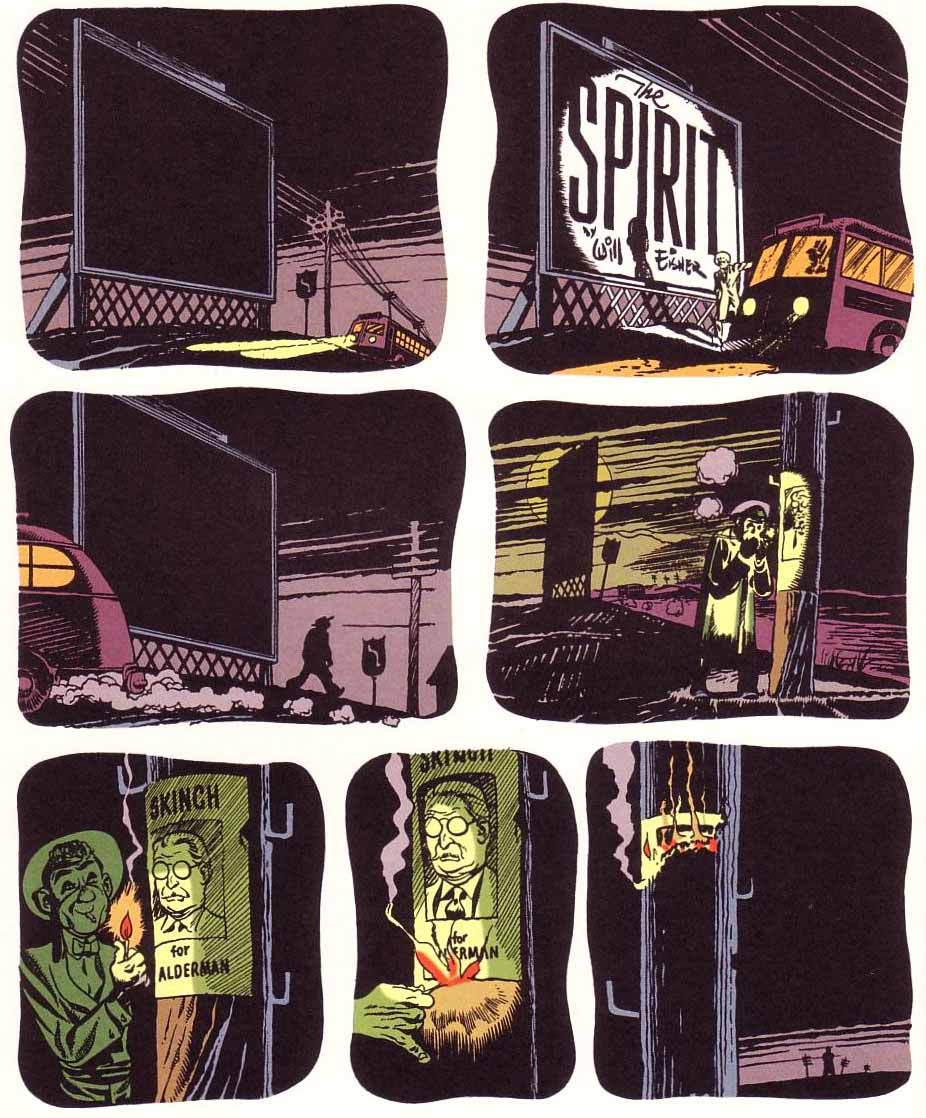 The Spirit: ‘The Partner’
The Spirit: ‘The Partner’
Will Eisner – and a host of ghost artists and assistants – kept coming up with new and effective visual tricks to suit each story’s specific mood. ‘The Killer,’ a psychological tale about a returned war vet, subtly used the same circular framing throughout the comic, in different contexts, including a Lady in the Lake-like POV sequence. Memorable escapades set in the Arab world such as ‘The Jewel of Death’ and its sort-of remake ‘Blood of the Earth’ riffed on Pépé le Moko and The Mask of Dimitrios. ‘The Last Trolley’ famously captured the feeling of swinging around in an old trolley:
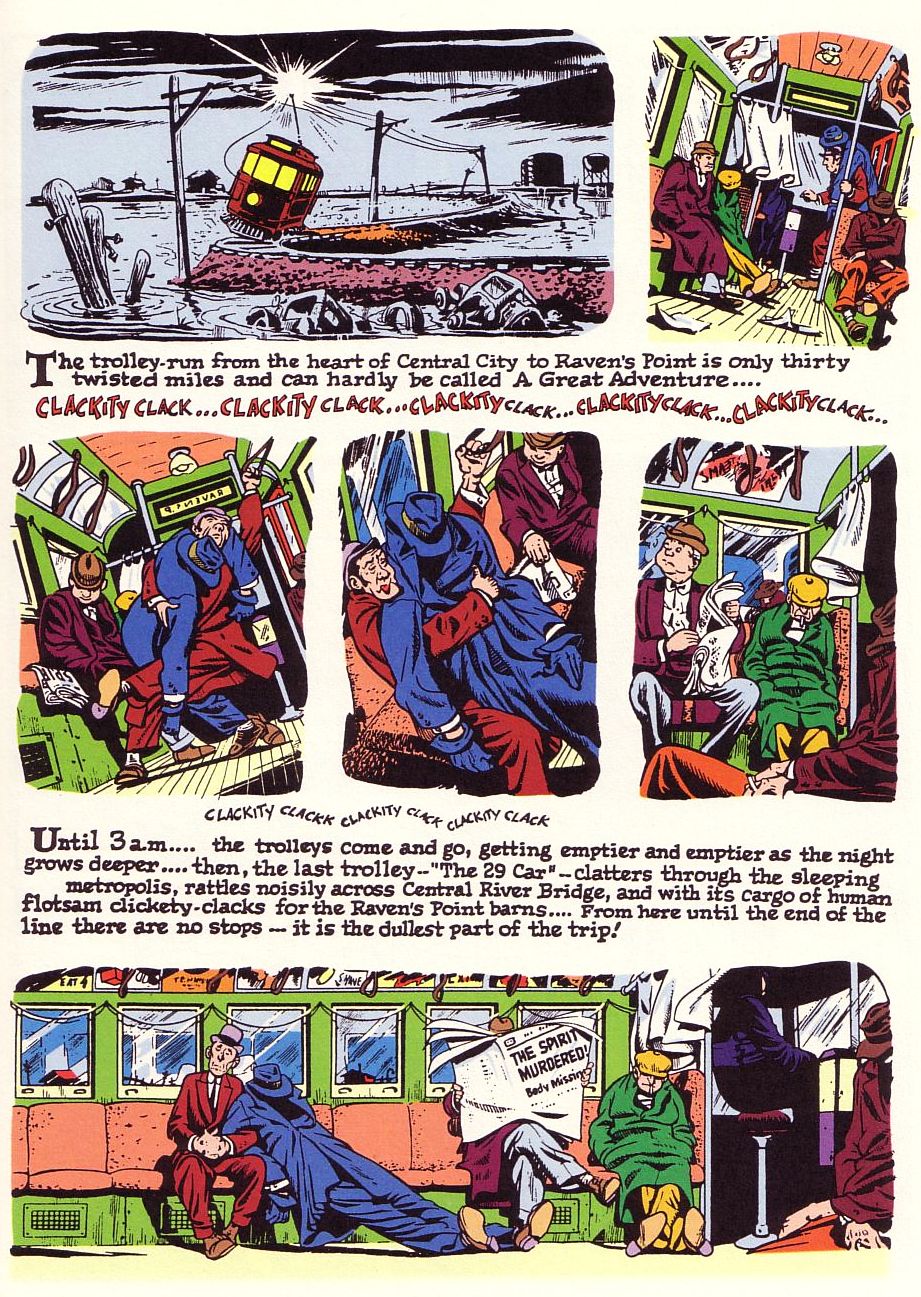 The Spirit: ‘The Last Trolley’
The Spirit: ‘The Last Trolley’
Here was an author in complete control of the medium. One tale opens with the line ‘It will take you ten minutes to read this story…’ and damn it if it’s not true! Fifty years later, guys like Frank Miller and Darwyn Cooke were still trying to catch up with the kind of mastery of sequential art Eisner and his team demonstrated back in the 1940s…
 The Spirit: ‘Lorelei Rox’
The Spirit: ‘Lorelei Rox’
Not all stories of The Spirit are hits, with some sexist and racial stereotypes being particularly cringeworthy. Overall, though, these comics are a fun time capsule of the angst and aspirations of postwar America. Notably, they engage with different styles, from two-fisted action to goofy comedy, from magical realism to exotic adventure, from science fiction to children’s reading primers, or even a weird combination of all of these (‘The Story of Sam’). In the final years, Eisner handed over the writing chores and the series continued to explore new directions as the Spirit temporarily moved to the moon with a bunch of convicts (that’s right).
Although ostensibly the hero, the Spirit (aka Denny Colt) often played a supporting role in the series, serving merely as a pretext for short, self-contained narratives about a wide range of characters who came into contact with the masked vigilante. You can see Will Eisner’s fascination with the human condition and the dark side of the American dream, which decades later led him to exchange pulp conventions for straight-up melodrama in masterpieces like A Life Force and Dropsie Avenue: The Neighborhood.
It’s not difficult to see how The Spirit came to influence so many Batman artists and writers. In fact, I would argue that Eisner’s work proved influential already at the time… Take ‘Next Stop – Danger!’ (Batman #43), which mostly takes place during a subway ride. Like many tales of The Spirit, this 1947 comic begins by pushing the masked heroes to the background, focusing instead on the desperate lives of ordinary citizens about to cross paths with the Dynamic Duo:

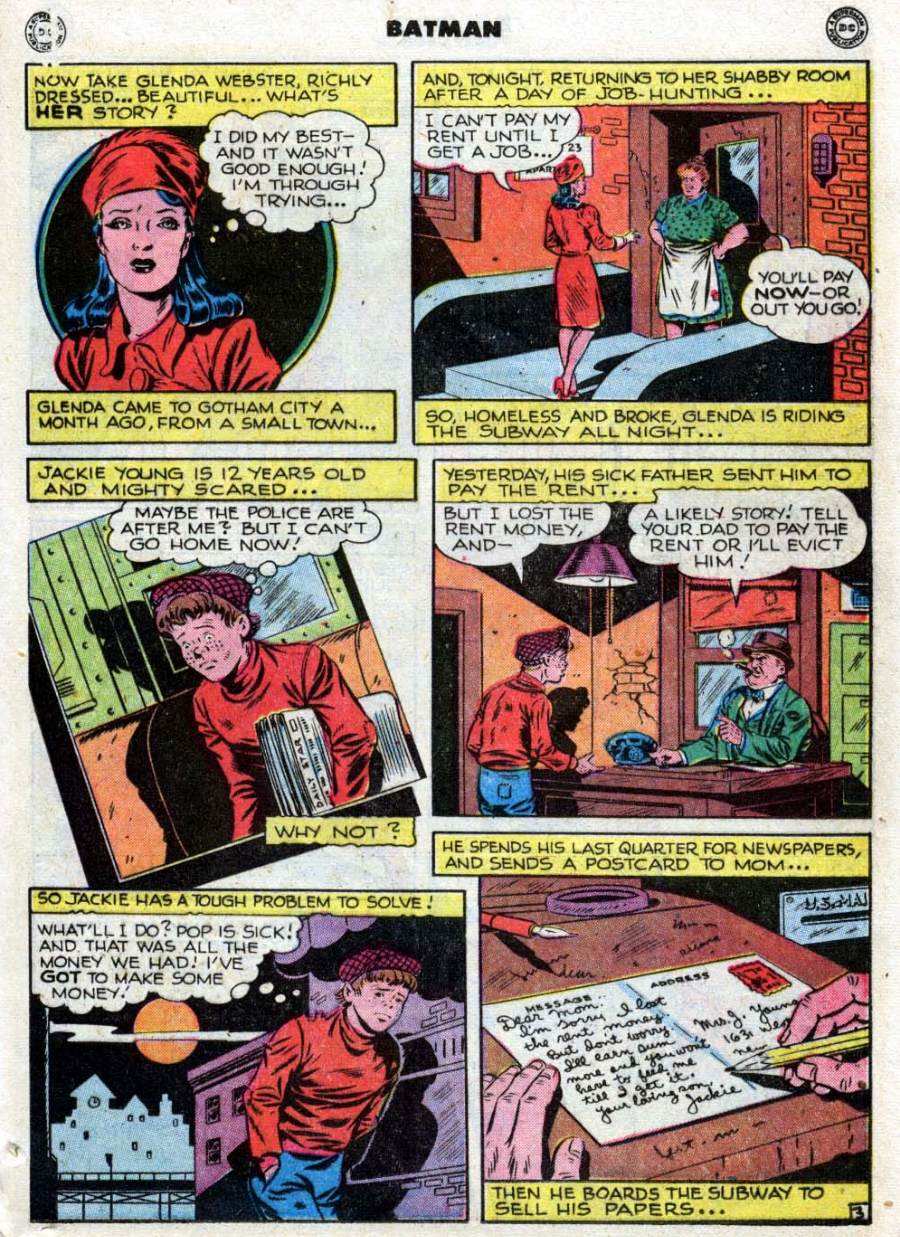 Batman #43
Batman #43
Batman and Robin come into the picture while chasing a couple of crooks who seek refuge in the subway. Each passenger plays a role in the ensuing confrontation and, by the end of the ride, their fates are all transformed in some way. While the art is cruder than Eisner’s and the ending lacks both his cruelty and his sense of humor, one can easily imagine a slight variation of this plot in the pages of The Spirit.
That said, the Batman tale which most openly acknowledged The Spirit’s legacy came out four decades later, in Detective Comics #497:
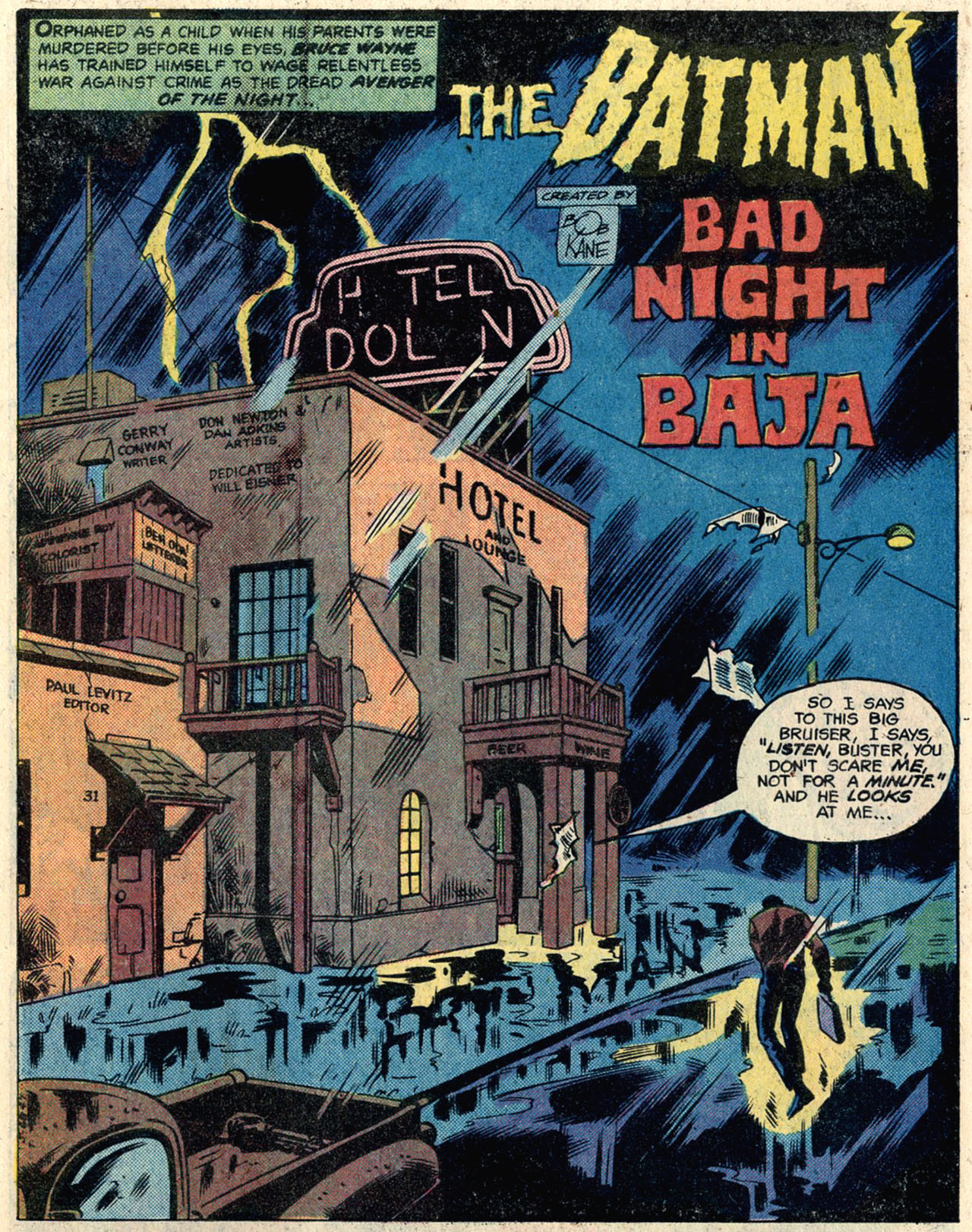 Detective Comics #497
Detective Comics #497
A rainy night in a Mexican small town. A sleazy bar where losers hang out and the owner complains that the rain is the only thing preventing him from burning the place down. A couple argues on the top floor, a spoiled wife walking out halfway through the honeymoon. A stranger walks in, with a bullet in his arm and a suitcase full of valuable documents. By the end of the story, he will have touched each of these lives… Once again, even though this is a Batman comic (the stranger who walks into the bar is Bruce Wayne), the fun of ‘Bad Night in Baja’ is watching all the subplots intertwine and pay off, as what would usually be peripheral characters are brought to the forefront.
Besides the mosaic structure and the focus on small-scale human drama, writer Gerry Conway includes various other winks to Will Eisner, from the hotel’s name (a play on Dolan, The Spirit’s version of Commissioner Gordon) to a criminal overlord called Squid (evoking the recurring villain The Octopus). The art, by the great Don Newton and Dan Adkins, also captures the noirish mood of hunched silhouettes and newspapers flying in the wind. And following the tradition of incorporating the series’ logo into the title page, the opening splash (above) features the words ‘The Batman’ as both a lightning and a shadow on the puddles in front of the hotel. All of this makes the comic cooler, although at the end of the day this is a cool comic not just because it is fun to spot nods to the master, but because aping The Spirit is such an effective place to start when writing a one-shot crime story!
Perhaps less obvious, Doug Moench’s script for ‘The Spider’s Ninth Leg!’ (from the anniversary issue Detective Comics #550) also displays a distinctively Eisneresque tone. In this comic overloaded with symbolism, Batman chases a junky called Joey Redwine through Gotham’s rooftops. Joey has just stolen a candlestick from a church and killed a nun – and the chase is intercut with flashbacks showing the eight key steps that led him to this moment. Given the on-the-nose religious imagery, it should come as no surprise where Joey ends up:

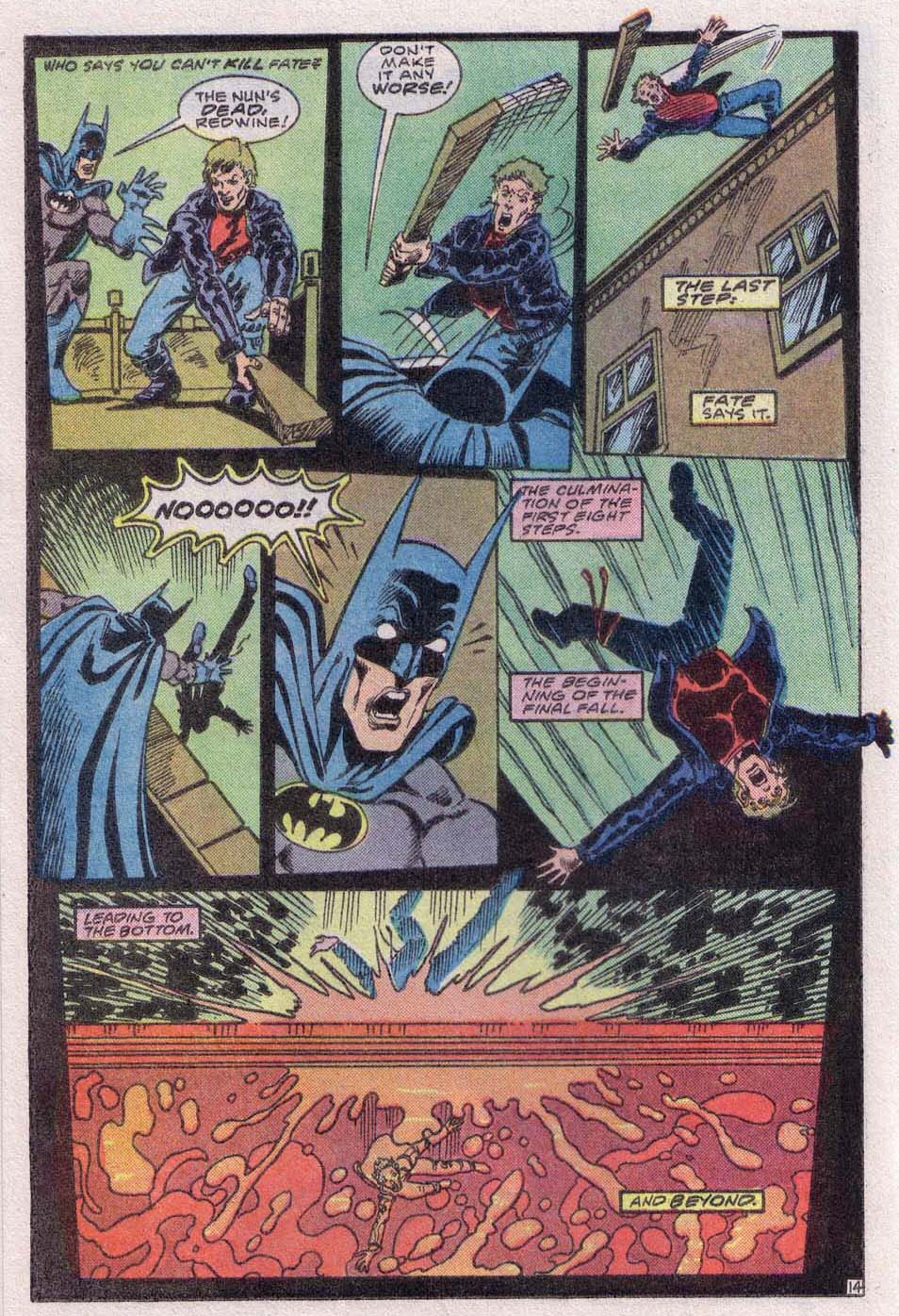 Detective Comics #550
Detective Comics #550
As you can tell from this denouement, it’s not much of a Batman yarn, in the traditional sense. The Dark Knight is an outside force (‘fate,’ as Moench’s narration puts it) and doesn’t do anything particularly heroic, much less save the day. ‘The Spider’s Ninth Leg!’ operates on a different level – it’s a downbeat morality play, one where Batman plays an essentially symbolic and instrumental role. It’s an examination of delinquency, showing how the kind of street criminals the Caped Crusader regularly beats up can have quite complicated background stories, with particular emphasis on child abuse (a key point in the comic, which finishes with the implication that Joey encounters his abusive father in Hell).
One writer with a knack for self-contained, non-Batman-centric stories that finish with poignant twist endings is Chuck Dixon, author of ‘Death Comes Home’ (Detective Comics #716) and ‘The Factor of Fear!’ (Gotham Knights #19). A personal favorite of mine is ‘Rocket Scientist’ (Detective Comics #704), which deals with the most inept criminal since Virgil Starkwell:

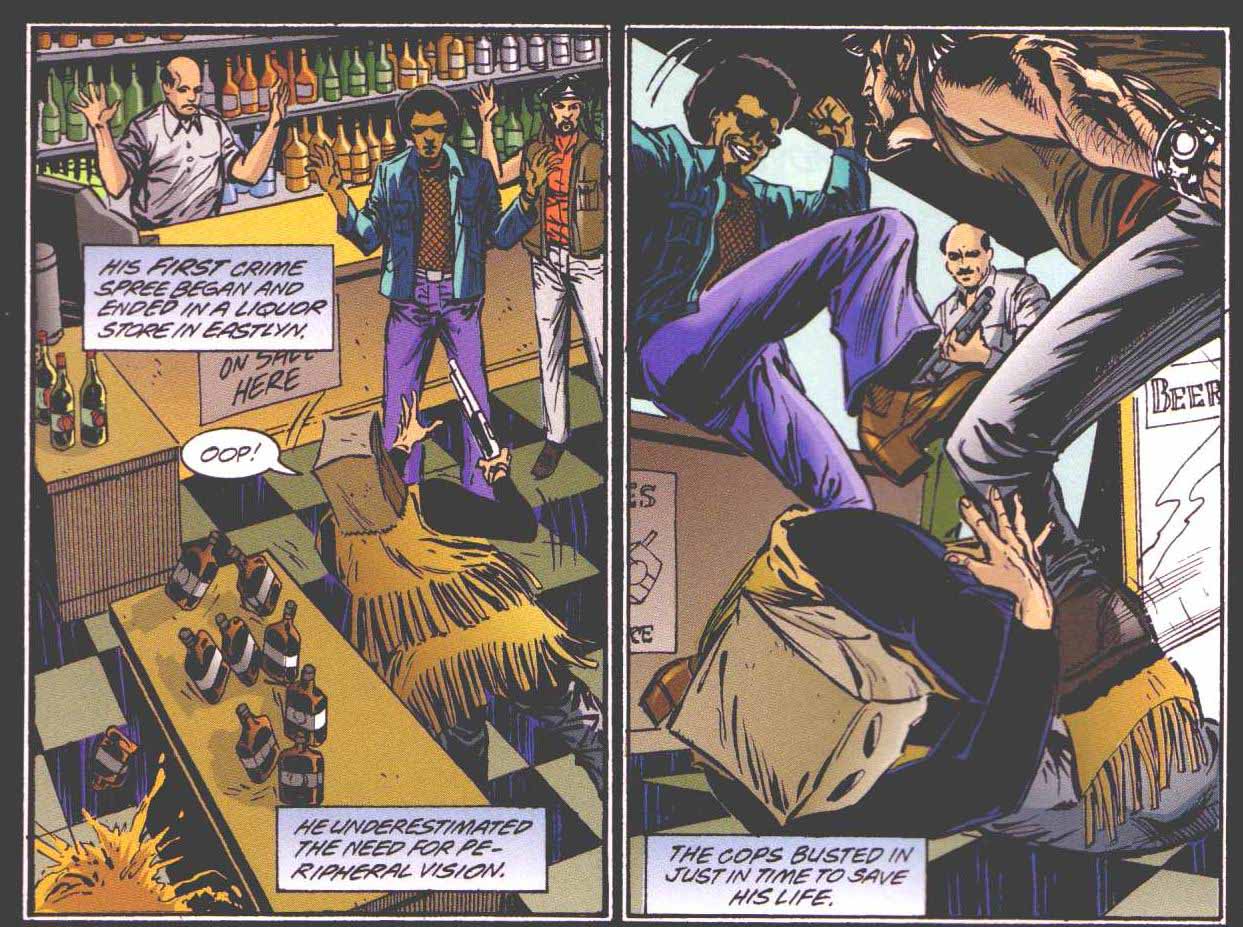 Detective Comics #704
Detective Comics #704
And then there is Dennis O’Neil’s and Denys Cowan’s The Question. I’ve mentioned before how this series crucially interacted with Batman comics, but it’s also worth noting that The Question came closer than anything else to capturing The Spirit’s… well, spirit. For one thing, there was inescapable visual continuity as both comics revolved around an action hero with blue gloves, trenchcoat, and a fedora. Moreover, The Question often spotlighted the doomed lives of marginal characters who were part of an intricate tapestry of twisted coincidences and interrelated plotlines, all told with a nasty sense of irony worthy of Will Eisner:


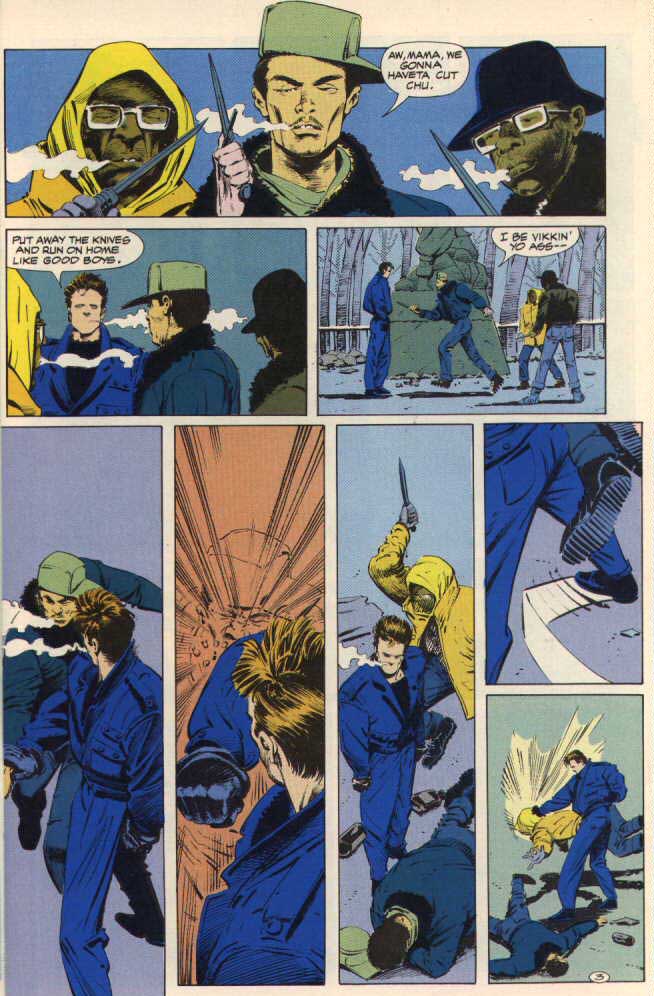 The Question #5
The Question #5
Taking all of this into account, you would be forgiven for thinking that a Batman/Spirit crossover would be the most awesome thing ever…
However, you would be wrong.

